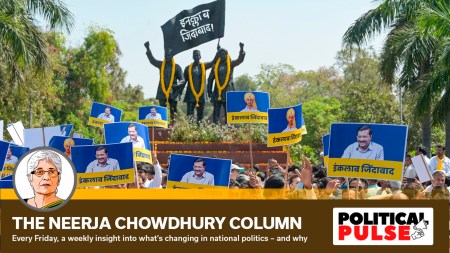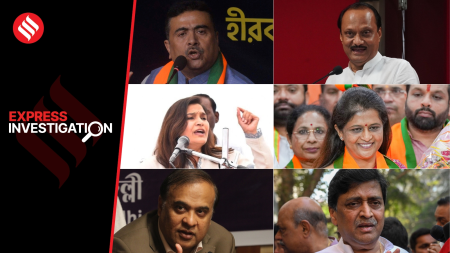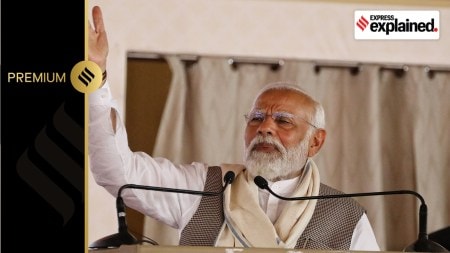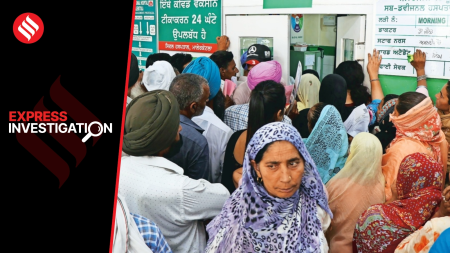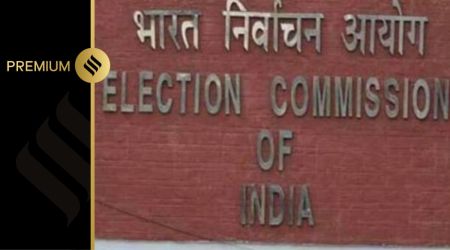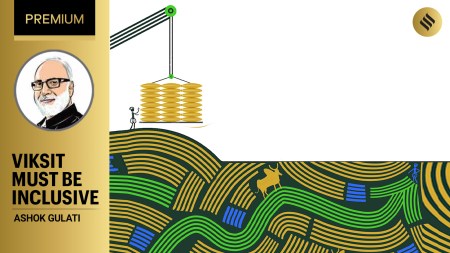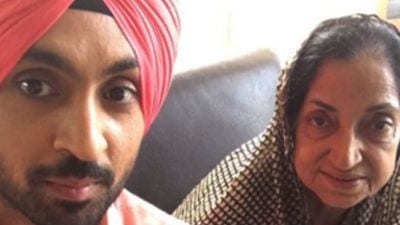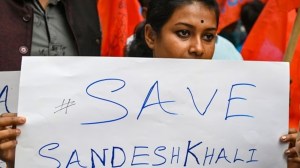- India
- International
Margaret Cousins: The Irish suffragette who fought for voting rights of Indian women
On Women's History Month, Adrija Roychowdhury digs deep into the life of Margaret Cousins, an Irish suffragist who fought hard for women's voting right in India. She drafted the first demand for women's voting rights in India to the British and mentored the likes of Kamaladevi Chattopadhyay and Muthulakshmi Reddy who led the movement for the political rights of Indian women.
 The shared colonial history between India and Ireland went a long way in shaping the work that Margaret would later undertake among Indian women. (Wikimedia Commons)
The shared colonial history between India and Ireland went a long way in shaping the work that Margaret would later undertake among Indian women. (Wikimedia Commons)After a particularly fervent struggle demanding the inclusion of women in the Indian legislature, the Madras State Provincial Legislature was the first to open its doors to female candidates in 1927. The move though was far from being full-hearted, for only a few weeks remained for a fresh election. “It was bound to be an unequal contest,” wrote Kamaladevi Chattopadhyay in her memoir. Chattopadhyay, who became the first-ever Indian woman to run for a seat in the legislature, was aware of the challenge at hand. “It seemed too late and would need a bulldog’s courage for a woman to venture into the fray,” she wrote.
It was an Irish lady though who stood firm behind Chattopadhyay’s candidature, unfettered and undaunted by the limits that time and incapacities posed. Margaret Cousins, or Gretta, as she was known among her close circle, was the one who launched Chattopadhyay into the contest for the Madras Legislative Council and stirred up a most remarkable campaign in that regard. To begin with, Chattopadhyay was not even listed as a voter for the lack of property ownership. It was Margaret who hurriedly arranged for a long-term lease of some property to enable her to vote. Thereon, she embarked upon a political campaign of the most creative kind, brimming with music, cultural shows, and spirited volunteers wearing dark blue badges.
Although Chattopadhyay lost the poll by a margin of only 55 votes, she recollected in her memoir that “it was an election that people continued to remember over several years as a great experience.” Margaret and her role in ensuring political rights for Indian women, however, lies forgotten and buried deep under pages of archives. In 1917, she founded one of the earliest pan-India women’s associations — The Women’s India Association (WIA) — in Adyar, Madras. In 1919, she created history by drafting for the first time the demand for women’s voting rights in India to the Southborough Committee in London. Quite apart from women’s issues, Margaret’s cultural contributions also ought to be remarked upon, for it was she who set the tune to the English version of Rabindranath Tagore’s ‘Jana Gana Mana’ that went on to become the National Anthem of India.
The Irish experience of politics and feminism
In 1878, when Margaret was born at Boyle, County Roscommon in Ireland, the country was a colony of England. The shared colonial history between India and Ireland went a long way in shaping the work that Margaret would later undertake among Indian women.
She belonged to a devout Irish Protestant family. From an early age itself, Margaret was sharply aware of women’s issues. In the autobiography, We Two Together (1950) which she wrote along with her husband James Cousins, Margaret spoke about the struggles she saw her mother go through due to lack of economic independence. “My mother had to present the various passbooks to my father and ask for the amounts. There were blank looks on these occasions. He grumbled at the amounts and spoke to her as if it was her fault,” she wrote. “And it was there and then that my girlish determination began to try and change the financial status of wives and mothers, who all worked so hard and got no money for themselves,” she added, pointing out, “One of my missions in life, equal rights of men and women, was finding me.”

After her schooling, Margaret went on to complete her education at the Royal University of Ireland in Dublin, where she graduated in 1902 with a degree in music. It was in Dublin, while she moved around in intellectual and privileged circles, that Margaret found her interest in Irish politics. It was also in Dublin that she met James, who was then a clerk at a coal and shipping office.
The couple got married in 1903. It was James who introduced Margaret to Annie Besant and her theosophical society as well as to Hindu philosophy. In their joint autobiography, Margaret noted how she at first disliked James’ obsession with vegetarianism, but later was influenced by the same. She turned vegetarian at their wedding breakfast.
In 1906, Margaret was in Manchester to speak at a vegetarian conference when she, for the first time, came in contact with the British suffragette movement. A conference of the National Council of Women (NCW) was held in Manchester during that time. This, she wrote, “was to prove to be a turning point in my life.” It was the first large gathering of women she had ever contacted. “Here I found a large organisation already challenging the continuance of inequality of opportunity between man and woman,” she wrote.
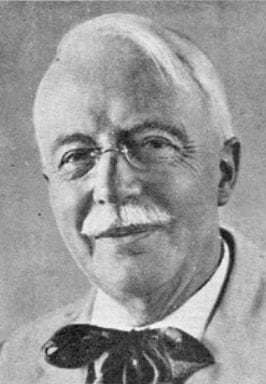 James Cousins (Wikimedia Commons)
James Cousins (Wikimedia Commons)After returning to Dublin, she got in touch with the members of the suffrage movement in Ireland and joined the local branch of the NCW. Soon after, during a visit to London, she came in contact with the Women’s Social and Political Union (WSPU), the militant suffragette organisation founded by Emmeline Pankhurst and her daughters Christabel and Sylvia.
While Margaret and James followed the English suffragettes with complete devotion, they also realised the need for a separate movement in Ireland for the different political situation there. Ireland, after all, was a subject country seeking freedom from England, while the latter was a free country. Consequently, on November 11, Margaret along with Hanna Sheehy-Skeffington, another Irish suffragette, founded the Irish Women’s Franchise League. “Our job was to see that votes for women were incorporated in the Home Rule Bill for which Ireland was fighting,” wrote Margaret. “Besides, we had no desire to work under English women leaders: we could lead ourselves.”
The members of the League were clear right from the outset that they would use both constitutional and unconstitutional or militant methods. For instance, when the Second reading of the Liberal Home Rule Bill was due in January 1913, Margaret along with the other members of the league decided that it was necessary to take some kind of militant action to get some kind of worldwide publicity for their protest against the exclusion of women from the bill. “Three of us volunteered to break the windows of Dublin Castle, the official seat of English domination,” wrote Margaret. “The sound of breaking glass on January 28, 1913, reverberated around the world and did what we wanted. It told the world that Irish women protested against an imperfect and undemocratic Home Rule Bill.”
Consequently, they became the first women prisoners in the context of the Home Rule demand in Ireland. They were sentenced to a month in jail and given the status of common criminals. The League members protested against this and demanded they be given the status of political criminals, like the men who had been arrested for clashing with the English government in their demand for Home Rule. On being denied the same, the women went on a hunger strike.
Historian Jyoti Atwal in her article, ‘Margaret Elizabeth Cousins and Transnationalism’ (2022) notes that “the essential disappointment of Irish suffragettes was the non-inclusion of women as citizens in the agenda of Irish Liberal Party’s Home Rule League proposal.” “Most Irish liberal politicians, like Tim Healy, John Redmond, Hugh Law and Joe Delvin, initially looked down upon Irish suffragettes as ‘gate crashers’, who were interrupting the cabinet ministers.”
Margaret’s experience of working for a suffrage movement in an atmosphere of anti-colonial movement would go a long way in helping her get a quick understanding of women’s issues in India, which also had a similar political setting. However, it needs to be noted that the nationalist movement in India was markedly different from the demand for Home Rule and the Irish revolution in Ireland, which was distinctly militant.
“But it was also the experience of working together with a large group of women to carry out a campaign for suffrage and also the collective experience of jail going, that helped shape her work in India,” says Atwal in an interview with indianexpress.com. She adds that once these women came out of jail, they were garlanded and given flowers. “This notion of women’s heroism was different from that of a nationalist heroine,” she says. “Her experience in the Irish freedom struggle taught Margaret that women had to carve out their own role and agenda within the struggle for political freedom.”
Suffrage in India
There was perhaps more than one reason why the Cousins were prompted to move to India in 1915. To begin with, they were thrown into an economic crisis in response to their support for the Home Rule demand. Atwal mentions an incident during the census of 1911 in Ireland when Margaret along with some other suffragettes had refused to be counted as a mark of their protest. Her husband was publicly supportive of Margaret in this protest. This incident impacted the job applications of James. In these circumstances, an invitation from Besant, who headed the Theosophical Society in Adyar, to work for her newly founded paper ‘New India’ came as a ray of hope for Cousins,” says Atwal.
Consequently, James received an offer from Besant for a job as a literary sub-editor of ‘New India’. The Cousins were active theosophists since 1907 when they first met Besant at a convention of the Theosophical Society in London. They had also opened a local branch of the Theosophical Society in Dublin in 1908. The job offered by Besant seemed like a good option to them. “It also allowed them to escape the First World War in Europe,” says Ajay Kamalakaran, a Mumbai-based writer who has worked on the life of James.
Once in India, the couple quickly fell in love with the country which was to become their permanent home. From their very first day, the Cousins took an active interest in the political situation in India. While writing in ‘New India’ James remained hypercritical of the British Raj. In 1916, he wrote an article praising the Easter uprising in Dublin that happened to cause such an upsurge of rage that Besant was forced to dismiss him. He later got appointed as the Vice-Principal of Madanapalle College (Andhra Pradesh) while Margaret got a teaching job there.
While Margaret too was active in Indian politics, her main interest remained in women’s issues. She found her teaching job at Madanapalle boring and monotonous and called it ‘donkey work’. Sensing the mental state she was in, it was James who first prompted her to think about women’s votes in India. “In a hundred years we may begin to think about it,” she had replied as recounted by Margaret in their autobiography. She admitted though that “her estimate was based on a Western notion of the age-long subjection of Indian women by their men folk, and their consequent backwardness.”
James’ suggestion though had struck a chord and she soon started organising tea parties for women at her home where she spoke about their political rights. Eventually, she formed the Abala Abhivardini Samaj (the Weaker Sex Improvement Society). She popularised the art of Ratan weaving among its members for making small plates and baskets and the women took to these small-scale industries quickly.
Soon after in July 1917, she used the Samaj as a model to create the Women’s Indian Association, with 70 members and Besant as its first president. Dorothy Jinarajadasa, an English theosophist was its secretary, while Margaret became its honorary secretary and edited the organisation’s journal ‘Stri Dharma’.
One of the first major tasks carried out by the Organisation was to set up a deputation of women to meet with Lord Chelmsford (the Viceroy) and Edwin Montagu (the Secretary of State for India) who were at that time preparing for the Government of India Act to propose a dual form of government in which Indians would have a larger autonomy. Several groups from India were invited to the House of Commons to give evidence before a Parliamentary Joint Select Committee. The WIA was the first to book their passage to London for presenting their case. The women of the association requested Margaret to draw up an address asking the committee to provide for the voting rights of women.
The delegation was led by Besant, Herabai Tata and Sarojini Naidu. They argued their case passionately. As narrated by journalist Anita Anand in her book Sophia: Princess, Suffragette, Revolutionary, they warned the British government “that if they made no provision for women’s votes, they would be introducing gender inequality to India deliberately and catastrophically.” While the committee heard their case patiently, they refused to provide for women’s voting rights. Instead, the Montague-Chelmsford reforms of 1919 left it to the individual provisional legislatures to decide on female franchise.
Feminist activist Kumari Jayawardena in her book The White Woman’s Other Burden (1995) describes that Margaret used her fund of experience of the women’s suffrage movement in Britain to organise “campaigns in key provinces, beginning in Madras and proceeding to Bombay and Bengal.” She arranged public meetings, produced resolutions, lobbied Indian legislators, and solicited funds from Indian and foreign suffrage groups.
Jayawardena notes that in her struggle for women’s enfranchisement, Margaret disagreed sharply with Besant. “The antipathy of the Irish Parliamentary party to the claim of votes for women, on the ground that it would go against the main cause of freedom was paralleled by the refusal of Mrs. Besant to make votes for Indian women a plant in the platform of her Home Rule League,” wrote Margaret. In 1917, Besant had been elected president of the Indian National Congress and was disinclined to mix Home Rule politics with women’s suffrage.
Margaret’s strategies, however, achieved early success. By 1921, the Madras Legislative Council gave a limited female franchise, and by 1929, all other provinces of India and the princely states had followed.
The next stage of their struggle was to get women to enter the legislature. For the 1926 Madras state elections, Margaret campaigned behind Chattopadhyay and Hannah Angelo, the secretary of the nurses’ association in Madras. Although they both lost, Margaret went on to campaign for Chattopadhyay and three other women for the elections to the legislative council. One of them, Dr Muthulakshmi Reddy, was elected as the first woman legislator in India. She went on to become a leading voice in the Madras legislature, agitating on social reforms like child marriage and temple prostitution.
Both Reddy and Chattopadhyay have in their writings and speeches given credit to Margaret for the role she played in hand-holding and leading them to realise their political potential. Chattopadhyay referred to Margaret as her “guru”. “For she was a seasoned and practical worker who qualified to blaze the trail for Indian women’s freedom,” she wrote.
Yet another landmark moment in Margaret’s career with women’s issues in India took place in 1931 when she organised the All-Asian Women’s Conference, which included delegates from Afghanistan, Burma (now Myanmar), Ceylon (Sri Lanka), Japan, Persia (Iran), with observers from Britain, New Zealand, the United States and Java (Indonesia). The key resolutions of the conference were concerned with issues around women’s education, child marriage, abolition of polygamy, and equal rights of guardianship over children and property. While concluding the event, Reddy, who was one of the delegates, referred to the conference as “the dream of one woman,” Margaret Cousins, which had “become a reality,” creating “an indissoluble bond among Asian women.”
“What Margaret brought to Indian women was the training and confidence to stand up for their political rights,” says Atwal.
Margaret’s role in nationalist politics was also commendable. She participated in the 1930 Civil Disobedience Movement and was sentenced to a year in jail for challenging the ban on free speech at a public meeting in Madras. Her trial and sentence caused a furore both in India and abroad. Recounting the day of her release from the women’s prison in Vellore, she wrote, “From the entrance to the old town there was a rush of welcoming people..doors, windows, and roofs were crowded. At street corners the car was held up while speeches were made, fruits and sweets presented. I was smothered in garlands and flowers.”
While she resumed active life in politics after her release, she also realised that she needed to step back. Given that the late 1930s were a period of intense political struggle in India, the active presence of powerful Indian women leaders made Western women less necessary. Margaret wrote, “I longed to be in the struggle, but I had the feeling that direct participation by me was no longer required, or even desired by the leaders of Indian womanhood who were then coming to the front.”
By the 1940s, Margaret’s health started to deteriorate after she suffered from a stroke. She passed away in 1954.
Despite James and Margaret’s enormous contribution to the pages of women’s history, there have been limited efforts to remember them both in Ireland and India. Atwal explains Western women did not find easy acceptability in the Indian society and polity of those times. “In Ireland too, she has been remembered only during the recent decade of centenary commemoration (2012-2022), that too has been limited,” she says. There is also the problem of the availability and accessibility of sources for writing about Margaret’s life in India.
Nonetheless, her memory is preserved in a street named after the couple at the heart of Madanapalle town and a library named after Margaret inside the premises of the All India Women’s Conference in New Delhi. Her name will remain unforgettable also because every account of women’s political rights in India begins with the name of Margaret Cousins.
Further Reading:
James H. Cousins and Margaret E. Cousins, ‘We Two Together’, Ganesh, 1950
Kamaladevi Chattopadhyay, ‘Inner Recesses Outer Spaces’, India International Centre, 1986
Jyoti Atwal, ‘Margaret Elizabeth Cousins and Transnationalism’, Gender and History, Routledge India, 2022
Kumari Jayawardena, ‘White Woman’s other Burden: Western Women and South Asia During British Rule’, Routledge, 1995
Barbara Ramusack, ‘Cultural Missionaries, Maternal Imperialists, Feminist Allies: British Women Activists in India, 1865-1945’, in ‘Western Women and Imperialism: Complicity and Resistance’, Nupur Chaudhuri and Margaret Strobel (ed.), Indiana University Press, 1992
Anita Anand, ‘Sophia: Princess, Suffragette, Revolutionary’, Bloomsbury USA, 2016
Apr 04: Latest News
- 01
- 02
- 03
- 04
- 05


